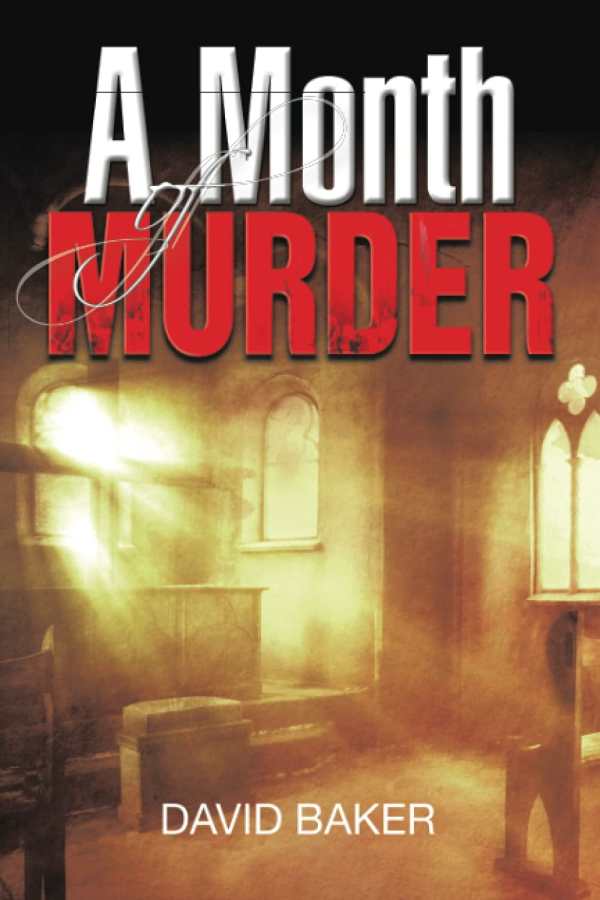A Month of Murder
In the small town mystery novel A Month of Murder, no one can be trusted, and the past always reemerges.
In David Baker’s mystery novel A Month of Murder, brutal murders and generational crimes plague a small town.
In Yorkshire’s Holme Hill, most residents have known each other for decades, and surprises are rare. Thus, when a dead body is discovered, two detectives, Don and Vivian, are ready to act. But it’s the first body of many. Without them being able to determine motivations for the killings, and with the police facing inconsistent stories from those they interview, it becomes clear that there’s something sinister afoot––and everyone in town is a suspect.
Meanwhile, Don, who also serves as a preacher, struggles with his faith and sense of fidelity; he’s attracted to Vivian, even though he’s in a stable marriage. He’s troubled by his teenage son Freddie’s autism diagnosis, too. Outwardly, he expresses dry humor; inwardly, he’s conflicted. His perspective leads the narrative—though Freddie becomes more involved as the cases wear on, suggesting patterns between the killings that no one else detected. The distance between father and son is bridged as the investigation continues.
Vivian, though competent as a detective, is a secondary, more detached, lead character; her story line revolves around her brief affair with Don and the professionalism they work to maintain after it. Characterized in terms of lingering glances and moments of mutual admiration, her presence is most a source of romantic tension. She’s forced into the novel’s background as the murders take precedence.
As the focus of the investigation shifts between the town’s residents, a sense of uncertainty is introduced. New characters are developed in compelling ways. Vague statements and cliffhanger chapter endings imply individuals’ involvement, but just when the killer seems obvious, hints are dropped that redirect suspicions. The man who found the body on the beach laments his mother’s controlling behavior; a woman in possession of crucial evidence weighs her social and legal responsibilities over glasses of gin; another detective hoards information and evidence to accelerate her career.
Here, the solution is only clear once the intersections between residents’ pasts are revealed. Government cover-ups and wayward love affairs lead to intrigue, and a clear mystique develops. But as the novel continues, its focus on small town behaviors and connections becomes repetitive. The police muse over their evidence and long suspect list for far too long, over pronouncing the book’s themes of generational loyalty, greed, and corruption. The conclusion is an amalgamation of responsible parties and explanations; aspects of what came before are glossed over, and some plot points are rushed through. Given the gruesome events that preceded it, this finale is casual to excess.
In the small town mystery novel A Month of Murder, no one can be trusted, and the past always reemerges.
Reviewed by
Delia Stanley
Disclosure: This article is not an endorsement, but a review. The publisher of this book provided free copies of the book and paid a small fee to have their book reviewed by a professional reviewer. Foreword Reviews and Clarion Reviews make no guarantee that the publisher will receive a positive review. Foreword Magazine, Inc. is disclosing this in accordance with the Federal Trade Commission’s 16 CFR, Part 255.

